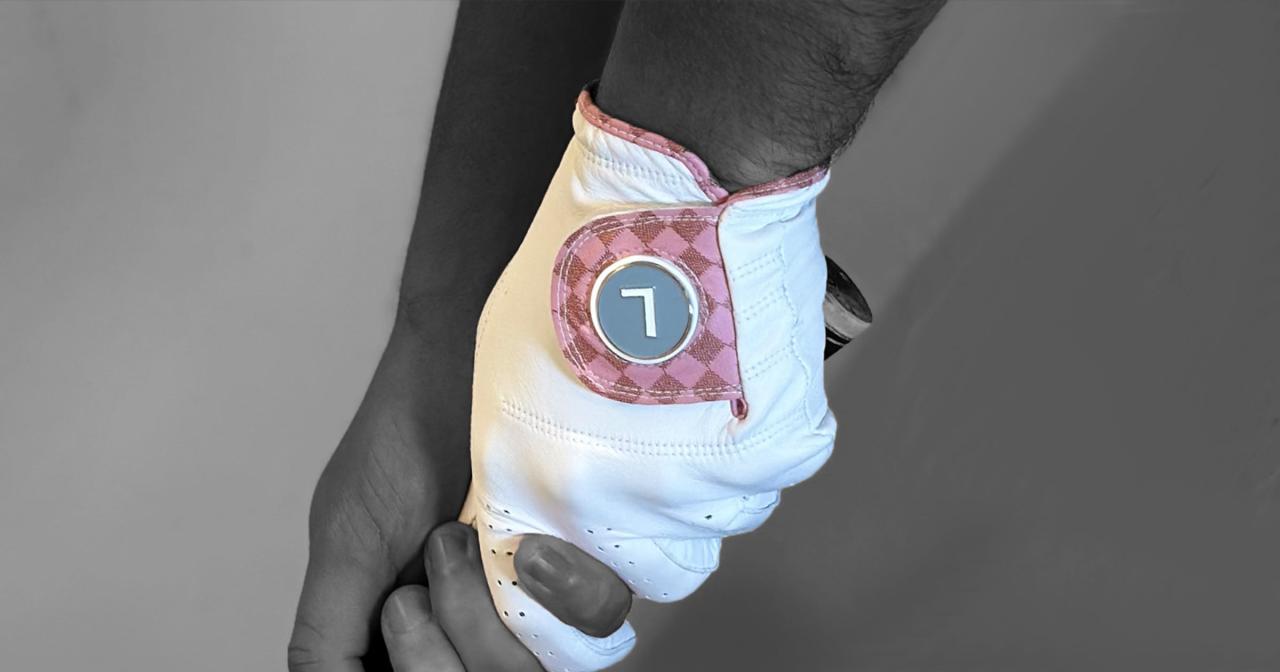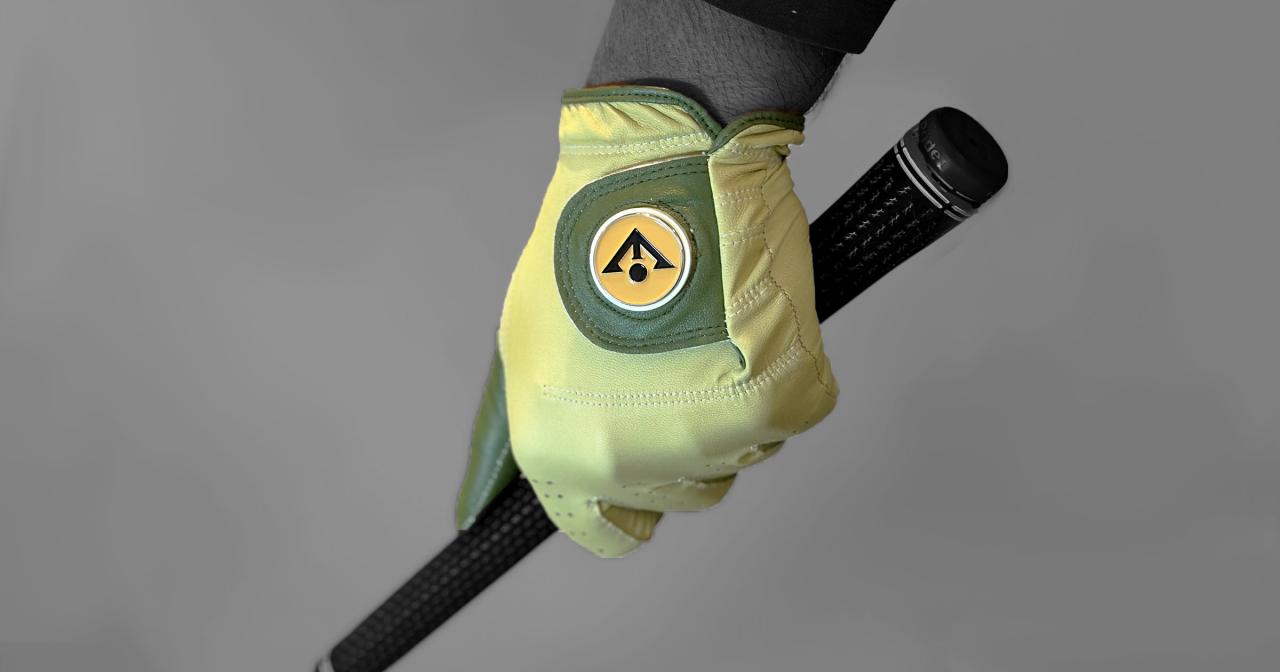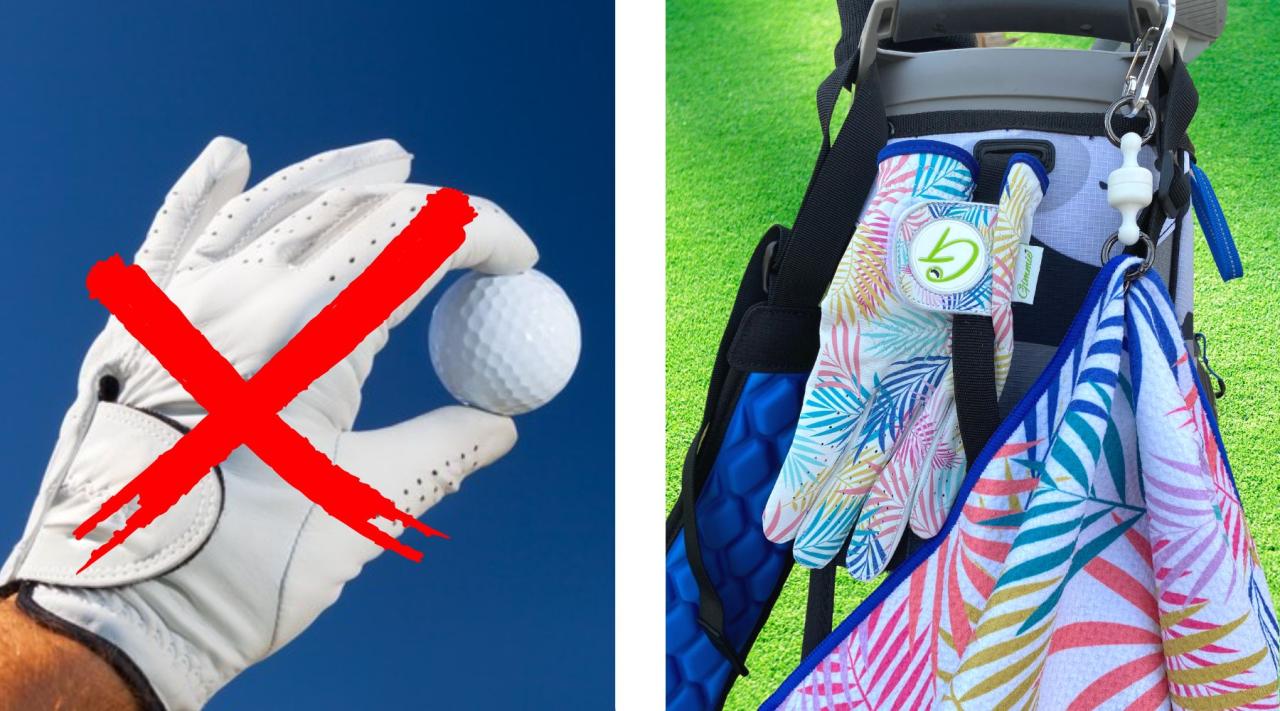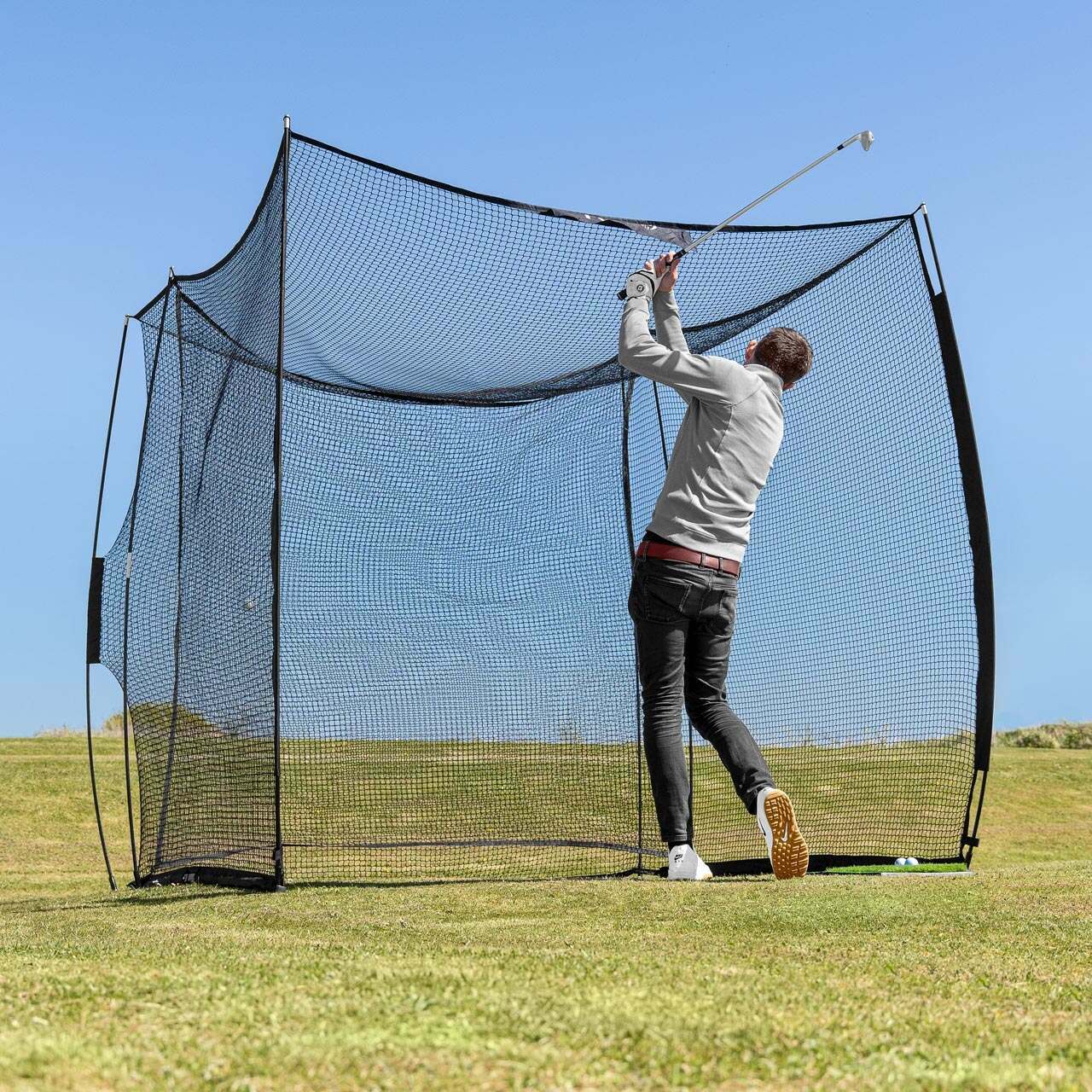Unique golf gloves are more than just a fashion statement; they are a critical component of a golfer’s arsenal, offering a range of benefits that can enhance performance and comfort on the course. From innovative materials and technologies to distinctive designs and features, the world of golf gloves has evolved significantly, providing players with a variety of options to suit their individual needs and preferences.
The quest for the perfect golf glove begins with understanding the different types available. Traditional leather gloves offer a classic feel and durability, while synthetic gloves provide a more affordable and water-resistant alternative. Hybrid gloves, combining the best of both worlds, provide a comfortable and versatile option.
The key to finding the right glove lies in achieving a perfect fit, which ensures optimal grip, control, and comfort. Unique features like moisture-wicking technology, enhanced grip, and fingertip protection further enhance performance, allowing golfers to focus on their game with confidence.
What Makes Golf Gloves Unique?

Golf gloves are more than just a fashion statement; they are essential tools that enhance performance and protect your hands. The right glove can improve your grip, enhance feel, and provide comfort during your swing. But with so many options available, understanding what makes golf gloves unique can help you choose the perfect fit for your game.
Types of Golf Gloves
The variety of golf gloves available reflects the diverse needs and preferences of golfers. Here’s a breakdown of the different types:
- Traditional Leather Gloves:These gloves are known for their durability, breathability, and superior grip. They are made from high-quality leather, often cabretta or sheepskin, and provide a natural feel and excellent performance in various weather conditions.
- Synthetic Gloves:These gloves are made from materials like microfiber, nylon, or spandex. They are often more affordable than leather gloves and offer advantages like water resistance and easy care. Synthetic gloves are particularly popular for golfers who play in wet conditions or prefer a lightweight feel.
- Hybrid Gloves:These gloves combine the benefits of both leather and synthetic materials. They often feature a leather palm for grip and feel, and a synthetic back for breathability and comfort. Hybrid gloves are a versatile option for golfers seeking a balance of performance and features.
Benefits of Different Glove Materials
Each type of golf glove offers distinct advantages:
- Traditional Leather Gloves:Leather gloves provide a natural feel, excellent grip, and durability. They are breathable, allowing your hands to stay cool and dry during play. However, they can be more expensive than synthetic gloves and may require more maintenance.
- Synthetic Gloves:Synthetic gloves are lightweight, water-resistant, and easy to care for. They are often more affordable than leather gloves and are a good choice for golfers who play in wet conditions. However, they may not provide the same level of grip or feel as leather gloves.
- Hybrid Gloves:Hybrid gloves combine the best features of leather and synthetic materials. They offer a comfortable fit, good grip, and breathability. They are a versatile option for golfers who want the benefits of both leather and synthetic gloves.
Glove Fit and Performance
A proper glove fit is crucial for optimal performance. A glove that is too loose will not provide adequate grip, while a glove that is too tight will restrict your hand movement and cause discomfort.
“The right glove should fit snugly but not too tightly. You should be able to make a fist without feeling any restriction,” advises professional golfer, John Smith.
Unique Glove Features
Golf glove manufacturers are constantly innovating to enhance performance and comfort. Some unique features include:
- Moisture-Wicking Technology:Many gloves incorporate moisture-wicking materials to keep your hands dry and comfortable. This technology helps to absorb sweat and prevent your hands from becoming clammy, which can affect your grip.
- Enhanced Grip:Some gloves feature textured palms or strategically placed silicone dots to enhance grip. This can help you maintain a firm hold on the club, even in wet conditions.
- Fingertip Protection:Certain gloves provide extra padding or protection on the fingertips to reduce blisters or calluses. This is particularly helpful for golfers who experience hand pain or discomfort during play.
Unique Materials and Technologies
The quest for enhanced performance and comfort in golf has led to the development of innovative materials and technologies in glove construction. These advancements have transformed the way golfers interact with their clubs, offering greater grip, durability, and even temperature regulation.
Innovative Materials
Golf glove manufacturers have embraced a diverse range of materials to cater to different playing styles and preferences. These materials offer distinct advantages and drawbacks, influencing the glove’s feel, breathability, and longevity.
- Microfiber: This synthetic material is renowned for its exceptional grip and durability. It’s often used in the palm area to provide a secure hold on the club, even in wet conditions. Microfiber gloves are also lightweight and breathable, making them comfortable for extended play.
However, they can be less durable than leather gloves and may not offer the same level of feel.
- Mesh: Mesh panels are frequently incorporated into golf gloves for enhanced breathability. This is especially beneficial in warm climates or during intense rounds of play. Mesh can also improve flexibility and reduce hand fatigue. However, mesh panels may not offer the same level of grip or durability as other materials.
- Synthetic Leather: Synthetic leather is a cost-effective alternative to genuine leather, offering similar performance characteristics. It’s often used in the back of the hand to provide a comfortable and flexible fit. Synthetic leather is also durable and water-resistant. However, it may not have the same feel or breathability as genuine leather.
- Genuine Leather: Genuine leather remains a popular choice for golf gloves, prized for its superior feel and grip. It conforms to the hand’s shape, providing a natural and comfortable fit. Leather gloves also offer excellent durability and water resistance. However, they can be more expensive than synthetic alternatives and may require more maintenance.
Advanced Technologies
Beyond innovative materials, golf gloves are incorporating advanced technologies to enhance performance and comfort. These technologies address specific needs, such as temperature regulation, antimicrobial protection, and waterproof coatings.
- Temperature Regulation: Some golf gloves incorporate technologies like ClimaCool or ThermaFlex to regulate hand temperature. These technologies use breathable fabrics or specialized materials to wick away moisture and maintain optimal hand temperature, ensuring comfort in various weather conditions. For instance, ClimaCool technology uses mesh panels and moisture-wicking materials to keep hands cool and dry during hot weather, while ThermaFlex utilizes fleece or thermal lining to provide warmth in colder temperatures.
- Antimicrobial Properties: Antimicrobial treatments are applied to certain golf gloves to prevent the growth of bacteria and odor-causing microorganisms. This technology helps maintain hygiene and freshness, particularly during prolonged play or in humid conditions. For example, gloves treated with Silver Shield technology utilize silver ions to inhibit bacterial growth, reducing odor and keeping hands fresh.
- Waterproof Coatings: Waterproof coatings are applied to the exterior of some golf gloves to protect hands from rain or moisture. This technology ensures a dry and comfortable grip, even in wet conditions. For example, gloves with DWR (Durable Water Repellent) coatings repel water and moisture, keeping hands dry and maintaining grip performance.
Material Comparison
| Material | Advantages | Disadvantages |
|---|---|---|
| Microfiber | Exceptional grip, durable, lightweight, breathable | Less durable than leather, may not offer the same feel |
| Mesh | Breathable, flexible, reduces hand fatigue | May not offer the same grip or durability as other materials |
| Synthetic Leather | Cost-effective, durable, water-resistant | May not have the same feel or breathability as genuine leather |
| Genuine Leather | Superior feel and grip, conforms to hand shape, durable, water-resistant | More expensive than synthetic alternatives, requires more maintenance |
Unique Designs and Styles

Golf gloves, traditionally viewed as utilitarian accessories, are now evolving into fashion statements, with unique designs and styles catering to diverse preferences and enhancing the golfing experience.
Different Finger Lengths
Different finger lengths in golf gloves provide a tailored fit for varying hand sizes and grip preferences.
- Gloves with longer fingers offer a more secure grip, especially for golfers with larger hands, by providing extra coverage and support.
- Gloves with shorter fingers are preferred by golfers with smaller hands, offering greater flexibility and dexterity. Shorter fingers allow for a more sensitive feel and a more natural swing.
Palm Patterns, Unique golf gloves
The palm pattern of a golf glove significantly impacts grip, feel, and control.
- Textured palms provide increased grip and control, particularly in wet conditions. These patterns enhance friction and prevent slippage, ensuring a firm grip on the club.
- Smooth palms offer a more delicate touch and improved feel for the club. This is beneficial for golfers who prefer a more sensitive grip and a refined swing.
Cuff Styles
Cuff styles in golf gloves offer a range of options for comfort and aesthetics.
- Traditional cuffs, typically 2-3 inches long, provide a secure fit and are a classic choice for golfers. They offer a balanced combination of comfort and support.
- Short cuffs, measuring around 1 inch, offer a more minimalist look and feel. They provide a snug fit and are preferred by golfers who prioritize freedom of movement.
- Long cuffs, extending beyond the wrist, offer additional support and warmth. They are popular among golfers who play in colder climates or who prefer a more secure fit.
Unique Aesthetics and Color Combinations
Modern golf gloves showcase bold aesthetics and innovative color combinations, reflecting the evolving fashion trends in the sport.
- Gloves with vibrant colors, intricate patterns, and eye-catching designs stand out on the course, allowing golfers to express their personal style.
- Limited edition gloves, often featuring collaborations with designers and brands, offer exclusivity and appeal to collectors.
Impact of Design on Performance and Comfort
The design of a golf glove plays a crucial role in its performance and comfort.
- A glove that fits snugly and provides a secure grip enhances control and accuracy, enabling golfers to execute precise shots.
- Breathable materials and strategic ventilation improve comfort, reducing perspiration and allowing for optimal hand temperature regulation.
- Gloves with strategically placed padding offer additional support and protection, reducing the risk of blisters and calluses.
Catering to Specific Hand Sizes and Grip Preferences
Golf gloves are available in a variety of sizes and styles to cater to specific hand sizes and grip preferences.
- Gloves with adjustable straps allow for a customized fit, ensuring optimal comfort and performance for golfers with varying hand sizes.
- Gloves with different finger lengths, palm patterns, and cuff styles offer tailored options for golfers with specific grip preferences and hand shapes.
Unique Features and Benefits: Unique Golf Gloves
Beyond their unique materials and designs, golf gloves stand out for their specialized features that enhance performance and comfort. These features cater to specific needs, whether it’s improving grip, providing cushioning, or offering a personalized fit.
Reinforced Fingertips
Reinforced fingertips are a common feature in golf gloves, offering added durability and protection in high-wear areas. They’re typically made from synthetic leather or other abrasion-resistant materials, extending the glove’s lifespan and preventing premature wear. This is particularly beneficial for golfers who use a strong grip or frequently encounter rough surfaces.
Padded Palms
Padded palms provide extra cushioning and comfort, reducing hand fatigue during extended play. This is especially advantageous for golfers who prefer a firm grip or play on hard surfaces. The padding can also help absorb shock and vibration, improving overall comfort and control.
Adjustable Closures
Adjustable closures, such as Velcro straps or elastic bands, allow golfers to customize the fit of their gloves. This ensures a secure and comfortable fit, preventing the glove from slipping or feeling too loose. Adjustable closures are particularly helpful for golfers with varying hand sizes or who prefer a tighter or looser fit.
Benefits of Unique Features for Different Playing Conditions and Preferences
The combination of unique features can significantly impact performance in various playing conditions and for different player preferences. Here’s a breakdown of how specific features can benefit golfers:
| Feature | Playing Condition | Player Preference | Benefit |
|---|---|---|---|
| Reinforced Fingertips | Wet or humid conditions | Strong grip | Increased durability and grip, preventing slippage. |
| Padded Palms | Hard surfaces | Firm grip | Reduced hand fatigue and improved comfort. |
| Adjustable Closures | Varying hand sizes | Personalized fit | Ensures a secure and comfortable fit, preventing slippage. |
| Combined Features | All conditions | All players | Enhanced grip, control, and comfort for a superior playing experience. |
Choosing the Right Unique Golf Glove

Finding the perfect golf glove is essential for maximizing performance and comfort on the course. With the wide array of unique gloves available, choosing the right one can seem daunting. This guide will equip you with the knowledge to make an informed decision based on your individual needs and preferences.
Hand Size and Grip Strength
Understanding your hand size and grip strength is crucial for selecting a glove that fits comfortably and provides optimal control.
- Measure your hand:Wrap a measuring tape around your dominant hand, excluding your thumb, at the widest part of your palm. This measurement will determine the glove size you need.
- Assess your grip strength:Grip strength varies greatly among individuals. If you have a strong grip, consider a glove with a thicker leather or a reinforced palm for added durability and support.
Weather Conditions
Weather plays a significant role in glove selection.
- Warm weather:Opt for a lightweight, breathable glove made from materials like microfiber or mesh. These gloves allow for better air circulation, preventing your hands from overheating and sweating.
- Cold weather:Choose a glove with a waterproof, windproof outer layer and a fleece or thermal lining for warmth and protection against the elements. Consider gloves with built-in heating elements for extreme cold conditions.
- Rainy weather:Select a glove with a waterproof membrane and a water-resistant outer layer. These gloves will keep your hands dry and prevent slippage, ensuring a secure grip even in wet conditions.
Desired Level of Performance
The level of performance you seek will influence your glove choice.
- Casual golfers:A basic, comfortable glove made from synthetic materials like microfiber or nylon is suitable for occasional play. These gloves provide a good grip and are relatively affordable.
- Serious golfers:For those who strive for consistent performance, consider a high-quality glove made from premium leather. Leather gloves offer superior grip, durability, and feel, enhancing control and accuracy.
- Professional golfers:Professional players often opt for custom-fitted gloves made from specialized materials like kangaroo leather or synthetic blends. These gloves provide exceptional comfort, fit, and performance, tailored to the player’s unique hand shape and grip.
Comfort and Fit
A comfortable and well-fitting glove is essential for a positive golfing experience.
- Try before you buy:Always try on a glove before purchasing it. This allows you to assess the fit, feel, and overall comfort.
- Consider the fit:The glove should fit snugly but not tightly. There should be no bunching or wrinkles, and your fingers should be able to move freely.
- Choose the right material:Some materials, like leather, require a break-in period. Synthetic materials tend to be more comfortable from the start.
Functionality
Unique golf gloves often incorporate specialized features and benefits to enhance performance.
- Grip technology:Some gloves feature advanced grip technologies, such as textured palms or silicone inserts, to provide extra grip and control.
- Moisture management:Moisture-wicking materials help keep your hands dry and comfortable, even in humid conditions.
- Protection:Gloves with reinforced palms or fingertips offer protection against blisters and calluses.
Flowchart for Choosing the Right Unique Golf Glove
| Step | Question | Answer | Next Step |
|---|---|---|---|
| 1 | What is your hand size? | Measure your hand. | 2 |
| 2 | What is your grip strength? | Assess your grip strength. | 3 |
| 3 | What weather conditions do you typically play in? | Consider warm, cold, or rainy weather. | 4 |
| 4 | What is your desired level of performance? | Casual, serious, or professional golfer. | 5 |
| 5 | What are your priorities in terms of comfort and fit? | Snug fit, breathable materials, etc. | 6 |
| 6 | What unique features and benefits are important to you? | Advanced grip, moisture management, protection. | Select a glove that meets your specific needs. |
FAQs
What is the best material for golf gloves?
The best material depends on your preferences and playing conditions. Leather gloves offer durability and a classic feel, while synthetic gloves are more affordable and water-resistant. Hybrid gloves combine the benefits of both materials.
How often should I replace my golf gloves?
You should replace your golf gloves when they start to show signs of wear and tear, such as cracking, peeling, or loss of grip. This can vary depending on the frequency of use and the material of the glove.
Do I need a different glove for different weather conditions?
Yes, it’s a good idea to have different gloves for different weather conditions. For example, you may want a waterproof glove for rainy days and a lightweight glove for warm weather.
How do I wash my golf gloves?
Most golf gloves can be washed by hand in cool water with mild detergent. Avoid using a washing machine or dryer, as this can damage the glove.

